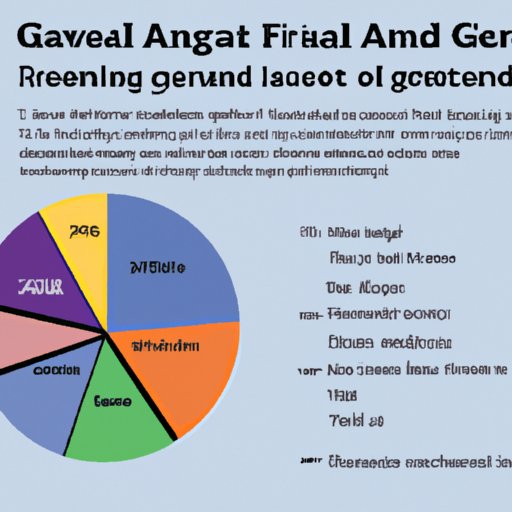Introduction
Graduate school can be expensive and most students need some form of financial assistance to help cover the cost. Fortunately, there are several ways to get financial aid for graduate school, including loans, grants, and scholarships. This article will explore the different types of financial aid available to help pay for graduate school, as well as tips on maximizing your financial aid eligibility, common questions about the application process, and strategies for finding grants and scholarships.
Types of Financial Aid Available for Graduate School
The first step in applying for financial aid is to understand what type of financial aid is available. There are several types of financial aid available for graduate school, including loans, grants, and scholarships.
Loans
The most common type of financial aid for graduate school is student loans. According to a survey conducted by the National Center for Education Statistics, 75% of all full-time graduate students take out student loans to help cover their educational costs. These loans can come from the federal government or private lenders, and may have varying terms and interest rates.
Grants
Grants are another form of financial aid that do not need to be repaid. Grants are typically awarded based on financial need, academic merit, or a combination of both. Grants can come from the federal government, state governments, colleges and universities, private organizations, and other sources.
Scholarships
Scholarships are similar to grants in that they do not need to be repaid. Scholarships are typically awarded based on academic merit, special skills or talents, or other criteria. Scholarships can come from the federal government, state governments, colleges and universities, private organizations, and other sources.

Tips on Maximizing Financial Aid Eligibility
Once you have identified the types of financial aid available, there are several steps you can take to maximize your financial aid eligibility.
Research Financial Aid Opportunities
It is important to research the different types of financial aid available and identify which ones you are eligible for. You should also make sure to read the fine print of any loan or grant you are considering, as there may be certain restrictions or requirements that must be met in order to receive the funds.
Complete FAFSA
The Free Application for Federal Student Aid (FAFSA) is the primary way to apply for federal student aid. The FAFSA is used to determine your eligibility for grants, loans, and work-study programs. Completing the FAFSA is the first step in applying for financial aid.
Apply Early
Many grants, scholarships, and other forms of financial aid have limited funds and are awarded on a first-come, first-served basis. To ensure you have the best chance at receiving financial aid, it is important to apply early.

Common Questions About Applying for Financial Aid
Applying for financial aid can be confusing and intimidating. Here are some of the most common questions people have about the process.
What Documents Are Needed?
The documents needed to apply for financial aid vary depending on the type of aid you are seeking. Generally, you will need to provide proof of income, tax returns, bank statements, and other financial records. You may also need to provide transcripts and letters of recommendation.
How Long Does the Process Take?
The length of time it takes to complete the financial aid application process varies depending on the type of aid you are seeking and the amount of paperwork required. In general, it is best to allow at least a few weeks for the process to be completed.
What Is the Maximum Amount of Financial Aid I Can Receive?
The maximum amount of financial aid you can receive depends on the type of aid you are seeking and your individual circumstances. Some forms of aid, such as grants and scholarships, typically have set maximum amounts that cannot be exceeded. Other forms of aid, such as loans, may have limits on the total amount that can be borrowed.

Analysis of Average Amount of Financial Aid Received by Graduate Students
According to a report published by the National Center for Education Statistics, the average amount of financial aid received by graduate students in 2019 was $17,947. This figure includes loans, grants, scholarships, and other forms of financial aid. However, the exact amount of financial aid received by an individual student can vary significantly based on a number of factors, including the type of institution attended, the degree program, and the student’s financial situation.
Factors Impacting Total Amount of Aid
The total amount of financial aid received by a student can be impacted by a variety of factors. These include the type of institution attended, the degree program, and the student’s financial situation. For example, students attending a private university may receive more financial aid than those attending a public university due to the higher cost of tuition. Additionally, students pursuing higher-cost degree programs may receive more financial aid than those in lower-cost programs.
National Averages of Financial Aid Awarded
According to the National Center for Education Statistics, the average amount of financial aid awarded to graduate students in 2019 was $17,947. This figure includes loans, grants, scholarships, and other forms of financial aid. However, this figure does not reflect the actual amount of financial aid each student received, as this can vary significantly based on the individual student’s circumstances.
Strategies for Funding Graduate School Through Grants and Scholarships
In addition to loans and other forms of financial aid, there are several strategies for funding graduate school through grants and scholarships.
Identifying Available Grants and Scholarships
The first step in finding grants and scholarships is to research the different opportunities available. Many grants and scholarships are offered by the federal government, state governments, colleges and universities, private organizations, and other sources. Additionally, many employers offer tuition reimbursement programs for employees who are pursuing graduate degrees.
Applying for Grants and Scholarships
Once you have identified the grants and scholarships you are eligible for, the next step is to apply. The application process for grants and scholarships can vary depending on the source, so it is important to follow the instructions carefully. Additionally, many grants and scholarships have deadlines, so it is important to submit your applications early.
Conclusion
Graduate school can be expensive and many students need some form of financial aid to help cover the cost. Fortunately, there are several types of financial aid available, including loans, grants, and scholarships. Additionally, there are several strategies for finding grants and scholarships to help fund your graduate school education. By researching the various options and applying early, you can maximize your chances of receiving financial aid for your graduate school expenses.
(Note: Is this article not meeting your expectations? Do you have knowledge or insights to share? Unlock new opportunities and expand your reach by joining our authors team. Click Registration to join us and share your expertise with our readers.)
